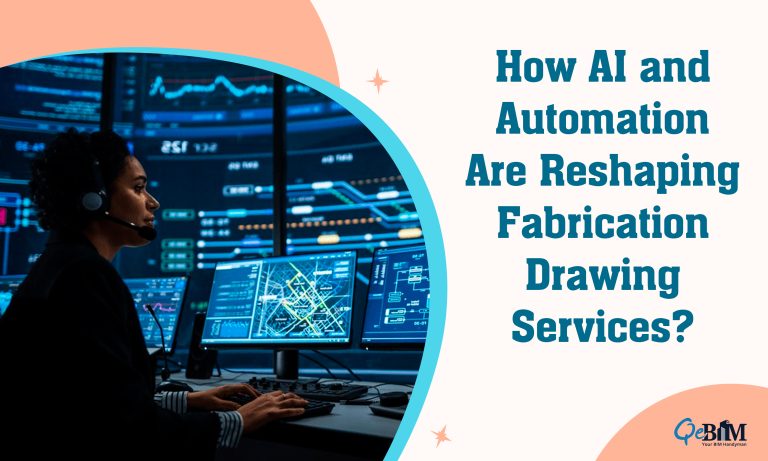How AI and Automation Are Reshaping Fabrication Drawing Services?

Introduction:
In the domain of manufacturing and construction, precision holds utmost importance. The crucial role of fabrication drawings in guaranteeing the successful implementation of projects hinges on their accuracy and efficiency. As we move forward, the fusion of artificial intelligence (AI) and automation is transforming the Fabrication Drawing Services landscape, offering improved productivity, cost-effectiveness, and unmatched precision.
The Current Landscape:
Traditionally, fabrication drawings or Shop Drawing Services involved manual drafting and design processes, often prone to human errors and time-consuming iterations. The demand for increased productivity and accuracy has spurred the adoption of computer-aided design (CAD) software, revolutionizing the industry. However, even with CAD, there are limitations that AI and automation can address.
AI in Fabrication Drawing Services:
Artificial intelligence is a game-changer in the fabrication drawing services domain. Machine learning algorithms, a subset of AI, can analyse vast datasets and learn from patterns, significantly improving the efficiency of design processes. AI algorithms can understand complex design requirements, optimize designs for performance and cost, and even predict potential issues before they arise.
One notable application of AI in fabrication drawing services is the automatic generation of design alternatives. AI algorithms can explore numerous design possibilities, considering various parameters such as material cost, structural integrity, and energy efficiency. This not only accelerates the design phase but also guarantees that the end product is optimized for both performance and cost efficiency.
Automation: Redefining Efficiency
Automation goes hand in hand with AI in reshaping fabrication drawing services. Automated systems excel at executing repetitive tasks with precision and consistency, diminishing the probability of human error. This is particularly crucial in the fabrication industry, where small errors in drawings can have significant consequences during the manufacturing or construction phase.
One of the key benefits of automation in fabrication drawing services is the acceleration of the drafting process. Automated systems can quickly generate detailed and accurate drawings based on design specifications, saving both time and resources. This velocity is particularly advantageous in the dynamic manufacturing and construction environments of today.
Integration of AI and Automation:
The synergy between AI and automation creates a powerful combination that can transform the entire workflow of fabrication drawing services. AI algorithms can analyse design requirements, optimize designs, and suggest alternatives, while automated systems swiftly translate these optimized designs into precise fabrication drawings.
One area where this integration shines is identifying and resolving of design conflicts. AI algorithms can identify potential clashes or inconsistencies in the design, and automated systems can rectify these issues in real-time. This not only prevents costly errors but also streamlines the overall fabrication process.
Challenges and Considerations:
While the future of fabrication drawing services looks promising with AI and automation, there are challenges that must be addressed. A notable consideration is the requirement for proficient professionals capable of operating and supervising these advanced systems. The industry must invest in training programs to equip designers and engineers with the skills required to harness the full potential of AI and automation.
Moreover, ensuring the security of sensitive design data is paramount. As fabrication drawing services become more reliant on digital technologies, robust cybersecurity measures must be in place to safeguard intellectual property and prevent unauthorized access.
The Future Outlook:
The integration of AI and automation in fabrication drawing services signifies more than just a technological advancement; it represents a paradigm shift. The future promises a seamless collaboration between human designers and intelligent machines, where creativity is augmented by the analytical prowess of AI. This collaboration will result in faster design iterations, higher precision, and more cost-effective solutions.
The role of human designers will evolve from manual drafting to overseeing and guiding the AI-powered design processes. Creativity, intuition, and a deep understanding of client needs will remain integral to the design process, while AI handles the heavy lifting of data analysis and optimization.
Conclusion:
As we stand at the cusp of this technological revolution, the future of fabrication drawing services is exciting and full of potential. AI and automation are not replacing human expertise but augmenting it, elevating the industry to new heights of efficiency and precision. Adopting these technologies is not merely a decision; it is a necessity for maintaining competitiveness in a continually evolving manufacturing and construction landscape. The infusion of AI and automation isn’t solely about creating improved drawings; it’s about constructing smarter.